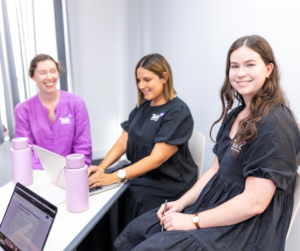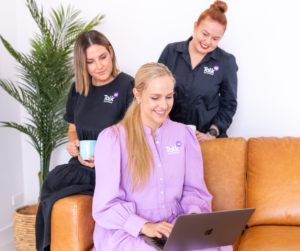If you have an active client, it can be difficult to keep them engaged during therapy sessions. This is especially true if your little one has sensory needs. As speech pathologists, we want to maximise our client’s listening and attention in therapy tasks. When we change the way we think about our client’s “wiggly” or “active” behaviour, we can help learn more in our sessions. In this blog post, we will discuss our top 3 ways to keep your very active client engaged. These top three ways can easily be moved into the home environment and include: active tasks, movement breaks, and sensory tools.
Use active tasks for your active client!
Active tasks is first of 3 ways to keep your active client engaged. These activities can be anything that gets your child moving, such as walking, running, or jumping. Active tasks are a great way to keep your child engaged. By incorporating movement into the task, you are able to hold your child’s attention for longer. For example, active children find naming picture cards boring and repetitive. Instead, you can ask them to jump to the wall and back like a kangaroo before naming each picture.
Sometimes a simple switch to a floor based activity can be enough! Other active tasks include: ball/bean bag throwing, hide and find games, spotlight with a flashlight or even an obstacle course. Danica, a TalkHQ Speech Pathologist, gets very creative in therapy sessions with active clients. She sets up animal figurines in the jungle who hold the cards captive! She also creates a race track where the client says the targets as they drive over the picture cards. These active therapy games are routinely used for speech, language and literacy based tasks. Visitors and clients will often find stimulus cards stuck to our walls.
Use a movement break to help your client refocus
Movement breaks are another great way to keep your active child engaged. By giving them a chance to move their bodies, you are allowing them to release excess energy and refocus their attention. Movement breaks can be as simple as walking around the room or even doing some simple stretches.
These can include short movement breaks before, between or within therapy tasks where needed. If you are working in a multidisciplinary team, ask the physiotherapist for suitable gross motor movement games. At TalkHQ, we work closely with our amazing physiotherapy friends from Tropic Kids Physiotherapy. In fact, Dr Laura MacDougall, from Tropic Kids Physiotherapy, presented to the TalkHQ Team at one of our Team Clinical Days. She shared heaps of fun ways to help support gross motor development in movement breaks. Some of these included: chair push ups, bear or crab walks, star jumps, scooter board.
Other movement breaks may include heavy work activities such as throwing and catching a weighted ball, helping to shift therapy resources by pushing a box across the room, or hiding objects in Theraputty for children to find. Don’t forget that these could also be turned into the therapy task! For example, place speech sound cards at one end of the room, the child walks like a crab to the opposite end of the room, grab a card and returns to this end placing the card in a bucket when complete.
Sensory tools
Sensory tools are another great way to keep your active client engaged. These tools can provide the child with the sensory input they need to stay focused. Some clients look for more or less sensory information in their environment to help them be ready for learning.
Talk to your client’s parents and occupational therapist. They may have some very specific strategies to support your child’s sensory regulation, which in turn supports their ability to listen and participate. Some of these strategies may include the use of a wobble cushion, a weighted blanket or toy (there are heaps of cool animals available; we have a turtle), a body sock or stretchy bag.
Some other sensory tools include:
– Chewable jewellery
– Fidget toys
Chewable jewellery is a great way to provide oral input for children who need it. Often children who chew pencils, their shirt collars or mouth toys would benefit from chewable jewellery. Occupational therapists have also recommended chewable jewellery for clients who interrupt a lot, or who talk when they are supposed to be listening.
Fidget toys are another great option for children who need sensory input. They can help to calm and focus sensory-seeking children, as well as provide a way to release excess energy. Fidget toys really help clients who struggle to sit still or who need to move their bodies to stay focused.
There are many different types of sensory tools, and it is important to find the right one to keep your active client engaged. If you are unsure what type of sensory tool would be best for your client, speak to an occupational therapist.
So these are our top 3 ways to keep your active client engaged in therapy. The best advice is to have a number of “tricks” up your sleeve as their interests and sensory needs can change on a day to day basis.
Happy therapy!







